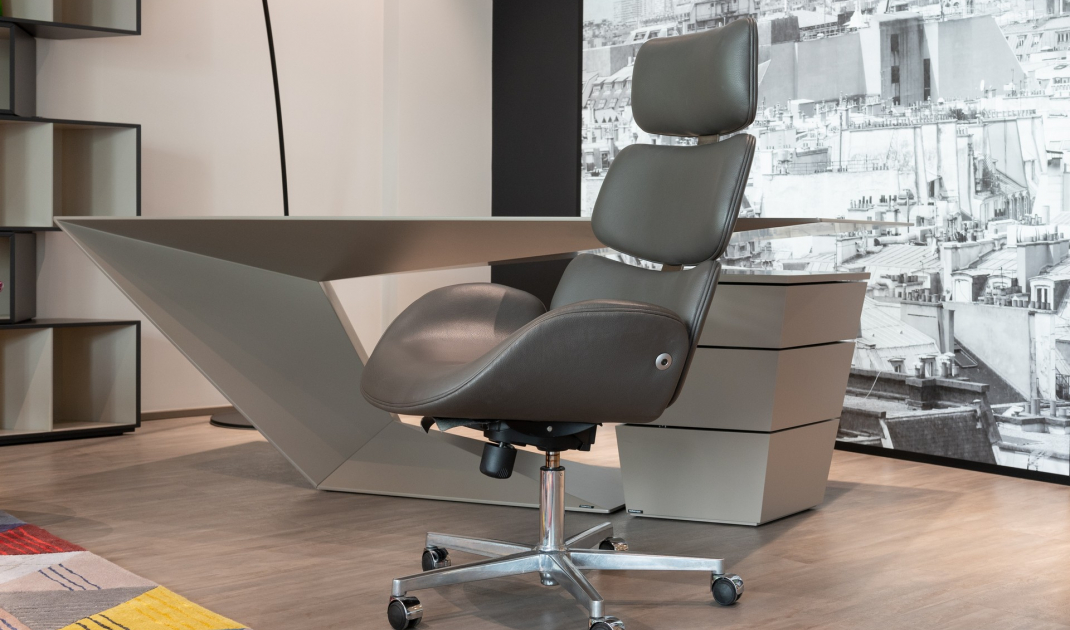Remote or officework usually involves, spending a lot of time in a sitting position. This is a posture that increases the strain on spinal structures. Therefore, to avoid developing or aggravating back problems, it is important to have an ergonomic office chair that supports the lower back and makes it easier for us to maintain proper posture.
Prevention is better than cure - bad posture can take its toll on our health very quickly
© Karolina Grabowska
What type of ergonomic office chair is best?
There are many types of ergonomic office chairs available. No one type of office chair is necessarily the best, but there are several factors to consider when choosing an ergonomic office chair. These things will allow the individual user to make the chair meet their specific needs. What features should a good ergonomic office chair have?
Seat height
Theseat height of an office chair should be easily adjustable. The easiest way to do this is with a pneumatic adjustment lever. For most people, a seat height that ranges from about 40 to 54 centimeters above the floor should work. This allows the user to put his feet flat on the floor, with his thighs horizontal and his arms even at desk height.
Seat width and depth
The seat should have enough width and depth to comfortably support each user. To avoid fatigue and leg pain, a width of 40-50 cm is usually standard. The depth (from the front to the back of the seat) must be deep enough for the user to sit with his or her back supported, leaving about 2 to 4 cm between the back of the knees and the seat of the chair. A good seat depth allows 2/3 to 3/4 of the length of the thighs to be supported. The seat's forward or backward tilt should also be adjustable.
The ergonomic backrest should be adjusted to accommodate our spinal curvature
© Joyce McCown
Backrest
Height
The ideal height for an ergonomic back rest ends just above shoulder height. Some chairs have height-adjustable backrests, but unfortunately, most chairs available on the market do not have this facility. A better option is to buy an oversized backrest than one that is lower than adequate.
Angle adjustment
If the backrest is separate from the seat, it should be able to adjust the angle up to 135 degrees (although most people prefer 110 degrees). The backrest should be able to support the natural curvature of the spine, with particular attention to proper lumbar support.
Profiled backrests
The support of the lower back is very important. The lumbar spine has an inward curvature, and sitting for long periods without support for this curvature leads to hunching (which flattens the natural curvature) and puts strain on structures in the lower spine. An ergonomic chair should have lumbar adjustment (both height and depth) so that each user can get the right fit and support the internal curvature of the lower back. Of course, everyone has a different shape, of the back. If the chair has adjustable lumbar support, it should be slightly away from the back of the chair. The best angle of recline is 3.1 and 3.6 degrees. The ideal backrest with a curve, will be one that fills the gap between the curvature of the spine and the surface of the backrest.
Other methods of lumbar support
If you don't have a chair with proper lumbar support, there are ways to help maintain proper lumbar curvature. Probably the simplest of these is to use a small rolled up towel. This is also a good way to determine how much curvature is right for you before buying a chair. The size of the towel can be increased or decreased to get different biases until you find the one that is right for you. This method is cheap and easy, but it is not a long-term solution. More formal products are:
- Lumbar roll - a foam roller that sits in the lower back
- D roll - a foam support in the shape of the letter "D", which does not tilt the plane of the back so
far forward.
- Lumbar cushion - maintains curvature and is available in many thicknesses.
More important for our backs is how we sit than how long we sit
© Max Vakhtbovych
Seat material
The material on the seat and back of an office chair should have enough padding to make it comfortable to sit on for long periods of time. A breathable fabric would also be a good option.
Armrests
The armrests of office chairs should be adjustable. They should allow the user to rest comfortably and relax their shoulders. Elbows and forearms should rest lightly, and the forearm should not be on the armrest while typing.
Turning
Any ergonomic chair should swivel easily so that the user can reach different areas of their desk effortlessly.




























